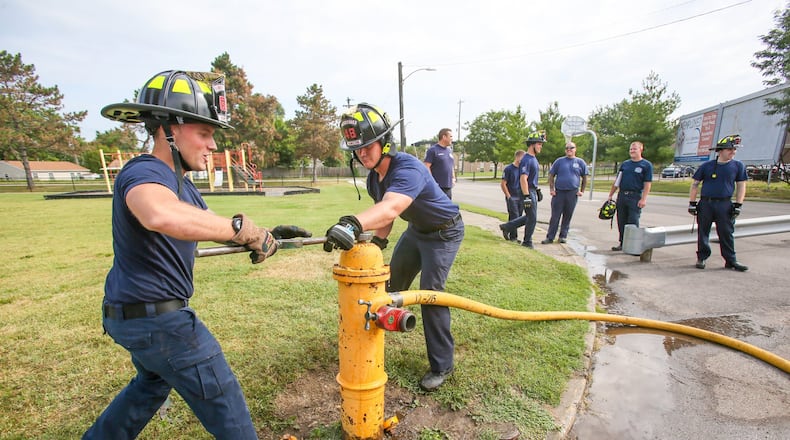Even with cuts the city has made, devastating reductions to money local governments used to receive from the state have harmed Hamilton’s ability to fix its streets, a reason the city is contemplating a street-repair levy, Smith and Council Member Tim Naab said.
City administrators in 2018 plan to spend less than $47.2 million in their general fund — the primary money source that operates the government, other than Hamilton’s utilities and some special funds that must be spent on specific things. That’s down from $50.8 million this year, which included a $3.45 million payment to the Community Improvement Corporation of Hamilton to redevelop the Main Street corridor.
City staff have not yet discussed specifics of department-by-department staffing with council. But Smith told the elected officials even though city staffing is at a lower level than in previous years, a city goal is to reduce the number of city employees by about 30 over three years as people leave or retire, with other staff taking up their workload.
The city currently has 612 full-time employees, and the equivalent of 649 full-timers when part-time employees are counted.
Although overall staffing costs are down, spending on police pay and benefits will be about $1.75 million above 2013; fire pay and benefits will be about $1.56 million higher than in 2013; with parks pay and benefits up $238,200; and the law department’s amount, which was $557,000 in 2013, down by almost $82,000 next year, council was told.
Part of the reason fire and parks are higher were staffing increases made last year. For example, “We made a very conscious choice at budget time last year, about this time, to add a fourth medic unit in the fire department, to add some additional police officers, and again, so when you look at the fund balance, the cost of doing that is $2 million a year, roughly,” Smith said.
Moving forward, Smith said city administrators are asking themselves, “How do we leave core services alone? Police, fire streets? Things of that nature that impact our citizens on a daily basis? And how do we become more efficient internally?”
That’s what’s driving the idea of reducing staff through attrition.
Of general-fund spending, 63 cents of every dollar go toward public safety, with another 26 cents going toward major city departments. Another 11 percent is used for other spending,
Smith told council the proposed 2018 spending plan is not “structurally balanced” because it includes one-time revenues that bring it into the black: The city previously paid about $1.5 million in cash for repairs to its McDulin parking garage at 102 N. Second St.
“At the time, we thought it was … just a smart thing to do, because we had the cash in reserve,” Smith said. “The year has not panned out as well as we hoped, in terms of revenues. So we’re going to actually finance the McDulin Garage, pull the $1.5 million back, put it back into the general fund.”
The general fund does have an un-earmarked reserve fund equal to 10 percent of the general fund’s size that can be used to pull the city through emergencies.
Naab, who chairs the finance committee, noted, “It will cost us $100 million for us to repave our streets. And again, the funding isn’t there for such a thing, but I hope that everyone in this room as I was looking around, that we’re all aware the potential for a streets levy is probable.”
Had city council not required very curtailed spending — and without the luck for city coffers that Hamilton received a one-time $7 million windfall in 2011 from the inheritance tax — the city might have gone bankrupt, Smith said.
“The state has cost us probably $18 million, $20 million in additional revenues in the last five years, and that’s what we would have used for our street program,” Smith said.
He also told council: “This is right from the state of Ohio’s website. You could see they’re over $2 billion in their rainy-day fund. And on top of that, so you can see where our money started disappearing, their money started growing. Not only do they spend $15 billion a year more today than they did five years ago, they’re also shoving our money into their rainy-day fund.”
“I’m assuming that’s because (Gov. John) Kasich can now, when he runs for president in 2020, (say) he’s got a $2 billion rainy-day fund,” Smith said. “But that money should be going back to the cities to fund basic services, and to go back into our infrastructure.”
RELATED: Local governments irked by Kasich touting Ohio’s robust rainy day fund
Despite the challenges, “here we are heading into 2018 on relatively solid footing,” Smith said.
About the Author
